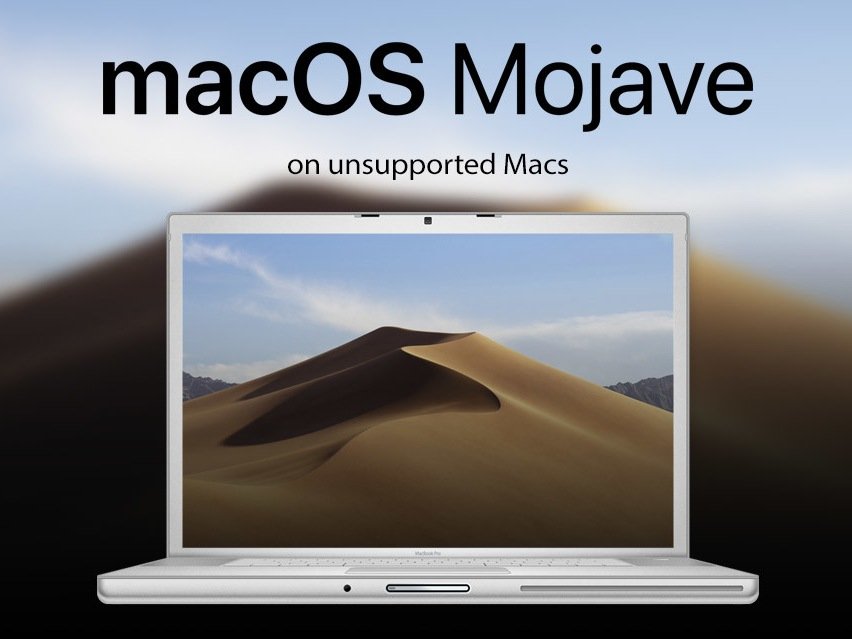
Macos Mojave For Unsupported Macs Mac
How to install macOS Mojave on some of the Unsupported Mac's. This is Educational video for personal use and test only. ( fair in use - mcatandandrew@gmail.c. How to download macOS Mojave Installer even on unsupported Mac? Using this quick tutorial you can download macOS Mojave, macOS High Sierra and macOS Sierra o.
Apple previously released security updates to defend against Spectre—a series of speculative execution vulnerabilities affecting devices with ARM-based and Intel CPUs. Intel has disclosed additional Spectre vulnerabilities, called Microarchitectural Data Sampling (MDS), that apply to desktop and notebook computers with Intel CPUs, including all modern Mac computers.
- Step 2 Launch the macOS Mojave Patcher tool by double-clicking the DMG file. Step 3 Specify the path for the bootable image and choose the appropriate USB. Step 1 How to install macOS Mojave on Unsupported Macs. Grab a copy of the Mojave Patch Tool at the link below: Make sure that your Mac is. Name this MacOS Mojave, and set it to Mac OS X (64.
- Essentially the Mojave Patcher Tool creates a modified USB installer drive (similar to the regular Mojave boot installer drive you can make) which you can then use to install not only macOS Mojave on the otherwise unsupported Macs listed below, but also a series of patched macOS Mojave component files that allow it to boot.
- Restart your computer and hold down the “Option” key as soon as the Mac starts up. Step 2: Select the USB drive, which was named as “macOS Mojave” as the startup disk. Step 3: If you want to upgrade your current macOS to macOS Mojave, simply use the continue button to proceed and follow step 5.
Macos Mojave Installer For Unsupported Macs
macOS Mojave 10.14.5 includes security updates for Safari, and the option to enable full mitigation, as described below.
Security Update 2019-003 High Sierra and Security Update 2019-003 Sierra include the option to enable full mitigation.
About security fixes in macOS Mojave
macOS Mojave 10.14.5 fixes this issue for Safari with no measurable performance impact.1 This update prevents exploitation of these vulnerabilities via JavaScript or as a result of navigating to a malicious website in Safari.
Customers can also protect their Mac by updating security settings in macOS to download apps only from the App Store. This setting helps prevent the installation of apps that could potentially exploit these vulnerabilities. All apps from the App Store are signed by Apple to ensure that they haven’t been tampered with or altered. Learn how to view and change app security settings on your Mac.
Although there are no known exploits affecting customers at the time of this writing, customers with computers at heightened risk or who run untrusted software on their Mac can optionally enable full mitigation to prevent harmful apps from exploiting these vulnerabilities. Full mitigation requires using the Terminal app to enable an additional CPU instruction and disable hyper-threading processing technology. This capability is available for macOS Mojave, High Sierra, and Sierra in the latest security updates and may reduce performance by up to 40 percent2, with the most impact on intensive computing tasks that are highly multithreaded. Learn how to enable full mitigation.

Unsupported Mac models
These Mac models may receive security updates in macOS Mojave, High Sierra or Sierra, but are unable to support the fixes and mitigations due to a lack of microcode updates from Intel.

- MacBook (13-inch, Late 2009)
- MacBook (13-inch, Mid 2010)
- MacBook Air (13-inch, Late 2010)
- MacBook Air (11-inch, Late 2010)
- MacBook Pro (17-inch, Mid 2010)
- MacBook Pro (15-inch, Mid 2010)
- MacBook Pro (13-inch, Mid 2010)
- iMac (21.5-inch, Late 2009)
- iMac (27-inch, Late 2009)
- iMac (21.5-inch, Mid 2010)
- iMac (27-inch, Mid 2010)
- Mac mini (Mid 2010)
- Mac Pro (Mid 2010)
- Mac Pro (Mid 2012)
1 Safari performance: Testing conducted by Apple in May 2019 showed that these updates resulted in no measurable reduction in Safari performance using common Web browsing benchmarks such as Speedometer, JetStream, and MotionMark.

2 macOS performance: Testing conducted by Apple in May 2019 showed as much as a 40% reduction in performance with tests that include multithreaded workloads and public benchmarks. Performance tests are conducted using specific Mac computers. Actual results will vary based on model, configuration, usage, and other factors.